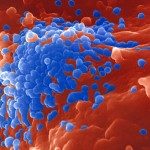Link to Pubmed [PMID] – 24375018
J. Med. Virol. 2014 Apr;86(4):647-52
The aim of this work was to describe the prevalence of type-specific Human papillomavirus (HPV) infection in women attending organized cervical cancer screening program in Uruguay. Nine hundred sixty-five liquid cervical cell samples obtained after collection of cervical smears for cytology were assessed for HPV DNA using the Papillocheck system (Greiner BioOne). The overall prevalence of High-Risk (HR) HPV infections was 20.8% and increased from 16.5% in women with normal cytology to 93.3% in HSIL. Prevalence of HPV 16 and/or 18 was 6.3% and HPV 16 was the most prevalent genotype in normal cytology (3.6%). The five most prevalent genotypes were HPV 16, 31, 51, 56, and 39. The overall prevalence peaked below age 30. This study provides essential baseline information at national level on type-specific HPV prevalence in Uruguay before the introduction of HPV vaccination. It documents the current prevalence of each of the oncogenic genotypes in a population attending cervical cancer screening program, suggesting that at least 64.7% of high risk lesions are potentially preventable by available HPV vaccines, and possibly augmentable if cross-protection against non-vaccine HPV types 31, 33, and 45 is confirmed.

